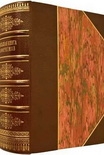Helgoland, Rovelli, Erica [black authors fiction txt] 📗

Book online «Helgoland, Rovelli, Erica [black authors fiction txt] 📗». Author Rovelli, Erica
Not to fear rethinking the world is the power of science: ever since Anaximander removed the foundations on which the Earth rested, Copernicus launched it to rotate in the sky, Einstein dissolved the rigidity of space and of time, and Darwin demolished the separateness of humanity . . . reality is constantly being redrawn in images that are increasingly effective. Step by step, the fabulous strangeness and beauty of reality is unveiled. The courage to radically reinvent the world: this was the subtle fascination of science that first captivated me as a rebellious adolescent . . .
RELATIONS
In a physics laboratory, where we study a small object such as an atom or a photon of Zeilinger’s lasers, it is clear who the observer is: it is the scientist who prepares, observes and measures the quantum object, who deploys their instruments of measurement, detecting the light emitted from the atom or the place where the photons arrive.
But the vast world is not made up of scientists in laboratories, or instruments of measurement. What is an observation, when there is no scientist observing? What does quantum theory tell us, where there is no one measuring? What does quantum theory tell us about what happens in another galaxy?
The key to the answer, I believe, and the keystone of the ideas in this book, is the simple observation that scientists, and their measuring instruments as well, are all part of nature. What quantum theory describes, then, is the way in which one part of nature manifests itself to any other single part of nature.
At the heart of the “relational” interpretation of quantum theory is the idea that the theory does not describe the way in which quantum objects manifest themselves to us (or to special entities that do something special denoted “observing”). It describes how every physical object manifests itself to any other physical object. How any physical entity acts on any other physical entity.
We think of the world in terms of objects, things, entities (in physics, we call them “physical systems”): a photon, a cat, a stone, a clock, a tree, a boy, a village, a rainbow, a planet, a cluster of galaxies . . . These do not exist in splendid isolation. On the contrary, they do nothing but continuously act upon each other. To understand nature, we must focus on these interactions rather than on isolated objects. A cat listens to the ticking of a clock; a boy throws a stone; the stone moves the air through which it flies, hits another stone and moves that, presses into the ground where it lands; a tree absorbs energy from the sun’s rays, produces the oxygen that the villagers breathe while watching the stars, and the stars run through the galaxies, pulled by the gravity of other stars . . . The world that we observe is continuously interacting. It is a dense web of interactions.
Individual objects are the way in which they interact. If there was an object that had no interactions, no effect upon anything, emitted no light, attracted nothing and repelled nothing, was not touched and had no smell . . . it would be as good as nonexistent. To speak of objects that never interact is to speak of something—even if it existed—that could not concern us. It is not even clear what it would mean to say that such objects “exist.” The world that we know, that relates to us, that interests us, what we call “reality,” is the vast web of interacting entities, of which we are a part, that manifest themselves by interacting with each other. It is with this web that we are dealing.
One of these entities is a photon observed by Zeilinger. But another is Anton Zeilinger himself. Zeilinger is an entity—like a photon, a cat or a star. You, reading these lines, are another such entity, and I—as I write them on a Canadian winter morning with the sky through the window of my study still dark, and an amber-colored kitten purring nestled between myself and the computer on which I’m working—I am also an entity like the others.
If quantum theory describes how a photon manifests itself to Zeilinger, and these are two physical systems, it must also describe the way in which any object manifests itself to any other object.
There are particular systems that are “observers” in a strict sense of the term: have sense organs and memory, work in a laboratory, interact with a large environment, are macroscopic. But quantum mechanics does not describe only these: it describes the elementary and universal grammar of physical reality underlying not just laboratory observations but every type and instance of interaction.
If we look at things in this way, there is nothing special in the “observations” introduced by Heisenberg: any interaction between two physical objects can be seen as an observation. We must be able to treat any object as an “observer” when we consider the manifestation of other objects to it. Quantum theory describes the manifestations of objects to one another.
The discovery of quantum theory, I believe, is the discovery that the properties of any entity are nothing other than the way in which that entity influences others. It exists only through its interactions. Quantum theory is the theory of how things influence each other. And this is the best description of nature that we have.52
It is a simple idea, but it has radical consequences that open the conceptual space required to understand quanta.
No Interaction, No Properties
Bohr speaks





Comments (0)